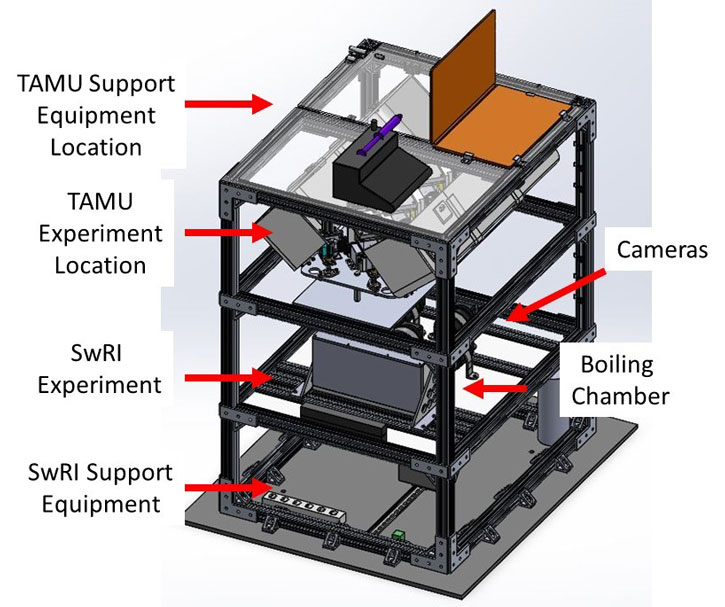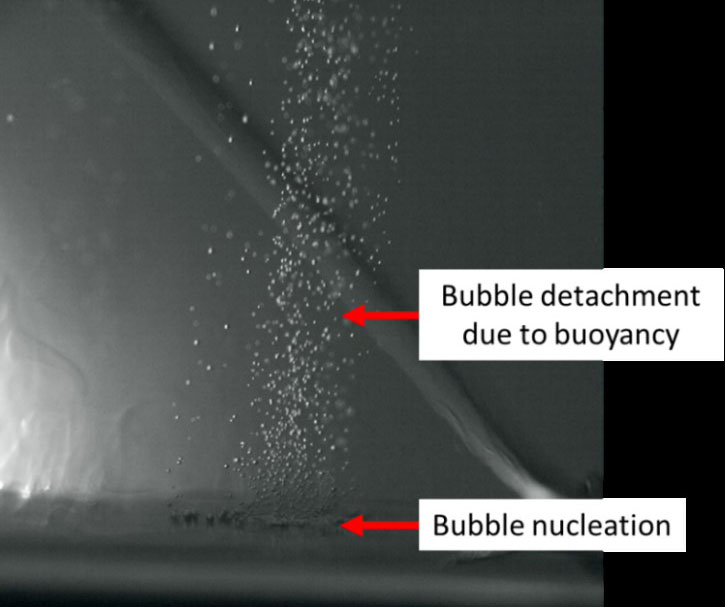BACKGROUND
Returning to the Moon or future missions to Mars, with their lower gravitational acceleration, requires expanded knowledge of the effects of reduced gravity on fluid behaviors in these environments, particularly two-phase fluids in contact with solid surfaces. Decades of research in microgravity fluid physics have provided extensive data for model and technology validation for space flight systems, but there are little to no data available across a range of partial gravity levels for lunar or Martian terrestrial systems. For example, bubbles that remain in contact with surfaces can lead to: reduced heat and mass transfer in heat exchangers, coalescence of small bubbles into larger ones that can damage equipment, and increased boiloff of cryogenic propellants in storage tanks. Research on partial gravity two-phase fluid physics applies to lunar and Martian surface power systems, life support systems design, cryogenic fuel management, and In Situ Resource Utilization (ISRU).
Texas A&M University (TAMU) and SwRI (Divisions 18 and 15) are executing a joint research program to study how bubbles detach from surfaces in reduced gravity. TAMU is providing payload space to SwRI in exchange for SwRI supporting TAMU’s experiment that is focused on bubble detachment from typical surfaces. SwRI’s experiments will demonstrate whether engineered surfaces could improve bubble detachment in reduced gravity. The experiments will be conducted aboard a reduced gravity aircraft in May 2023.
APPROACH
SwRI’s experiment has been designed to heat stainless steel surfaces and boil FC-72 (an inert heat transfer fluid) aboard Zero-G’s reduced gravity aircraft. The experiment will be mounted in a payload rack with TAMU’s experiment as shown in Figure 1. During the flight, high-speed video cameras will capture bubble nucleation and detachment volume, and various temperature measurements will be used to calculate the surface heat flux.
ACCOMPLISHMENTS
Ground-based experiments (shown in Figure 2) were conducted to determine the imaging parameters (focal length, frame rate, lighting, etc.) needed to capture boiling data. These experiments used the low boiling temperature liquid FC-72, which was selected for the flight test. These ground tests validated the heat transfer analysis and the overall approach to collecting boiling data to design the flight experiment. The flight experiment was designed within the available payload space. Final assembly and ground testing of the payload rack is expected to be completed by January 2023.

Figure 1: Experiment layout within the flight payload rack: The payload rack has been fabricated to house both the TAMU and SwRI experiments.

Figure 2: SwRI ground test for bubble nucleation and detachment: This image is taken from the ground tests that were conducted to help design the flight experiment and select the instrumentation needed to capture bubble detachment data.
